The style of this super beautiful teacup is Ming, using the underglaze blue technique, and entirely handcrafted and hand painted. The pattern features the classic design of intertwining lotus branches (Chanzhi Lian). What’s even more astonishing is the delicate craftsmanship of this teacup creates a thinness akin to cicada wings, a brilliance reminiscent of glass, and a weightless feel as floating clouds. When held up to the light, the intricately drawn interlocking lotus pattern inside the cup faintly emerges, elusive yet enchanting. It’s as if colorful clouds chase the moon, casting a misty glow, a sight so beautiful it’s beyond words, captivating, and mesmerizing.
The pattern of this beautiful teacup is Chanzhi Lian, which is also known as ‘intertwining lotus branches’ or ‘Interlock Branch Lotus’, which is a Chinese decorative motif with the symbolism of “flowers within flowers, blossoms within leaves.” It is also referred to as the “Wanshou Teng,” representing auspiciousness and longevity due to its continuous and interconnected structure, symbolizing the concept of “endless vitality.” In addition, in traditional Chinese Confucian culture, the lotus is seen as the embodiment of truth, goodness, and beauty, as well as a symbol of Buddhism. The pronunciation of “Lian” is similar to the word “continuous” in Chinese, further expressing the idea of continuous growth and conveying positive wishes and emotions.
As part of Chinese traditional ornamentation, Chanzhi Lian has been passed down through generations, reflecting its own beauty and cultural significance with a unique artistic charm. The lotus possesses a sacred and pure temperament, being beautiful without being ostentatious and magnificent without being vulgar. It is precisely because of this aesthetic appeal that Chanzhi Lian has become a decorative pattern applied to various aspects of life.
The Ruyi motifs on the outside of this teacup also carry auspicious meanings. The Ruyi symbolizes auspiciousness and good fortune. Its rounded and flawless form embodies blessings, satisfaction, and wishes fulfilled. Underneath its graceful appearance, it holds profound significance, representing the auspicious and delightful ideals of good fortune and contentment.
In addition, the beautiful tin spots on the porcelain add even more unique charm to it. The formation of tin spots is due to the high content of iron elements in local parts of the blue pigment. After reaching saturation in the high-temperature glaze solution and cooling down, the iron elements in the supersaturated part start to precipitate. If the iron content of the blue pigment is higher and the cooling rate is appropriate, tin spots are more likely to appear on the surface of the ware.
In addition to firing and materials, the formation of tin spots also involves the factor of glaze material. During the painting process, tin spots can also be formed due to the accumulation of blue pigment. Tin spots are more likely to appear on the surface of the ware at the intersections and the starting and ending points of brushstrokes. The formation of tin spots can be said to be a natural creation or an artificial decoration. These tin glazes not only add a rustic texture to the teacup but also imbue it with a unique sense of history.
The delicate brushstrokes and intricate detailing of the painting on this teacup create a distinct sense of aesthetic appeal. The stunning underglaze blue, along with the heavy tin glaze, gives it a bold and intense beauty. The thin-walled body also adds another layer of beauty to it. This teacup exudes a simple yet luxuriant charm, reminiscent of the style of imitation Ming, making it truly captivating and irresistible.





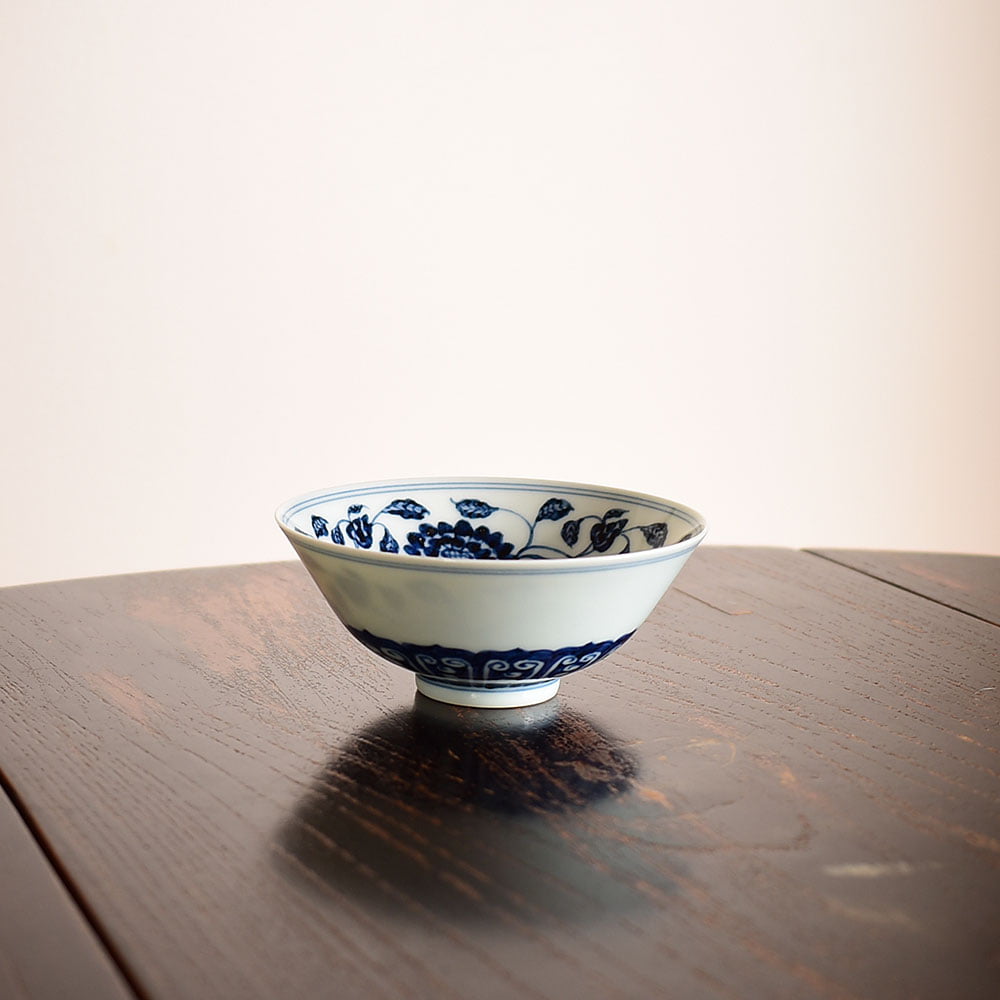
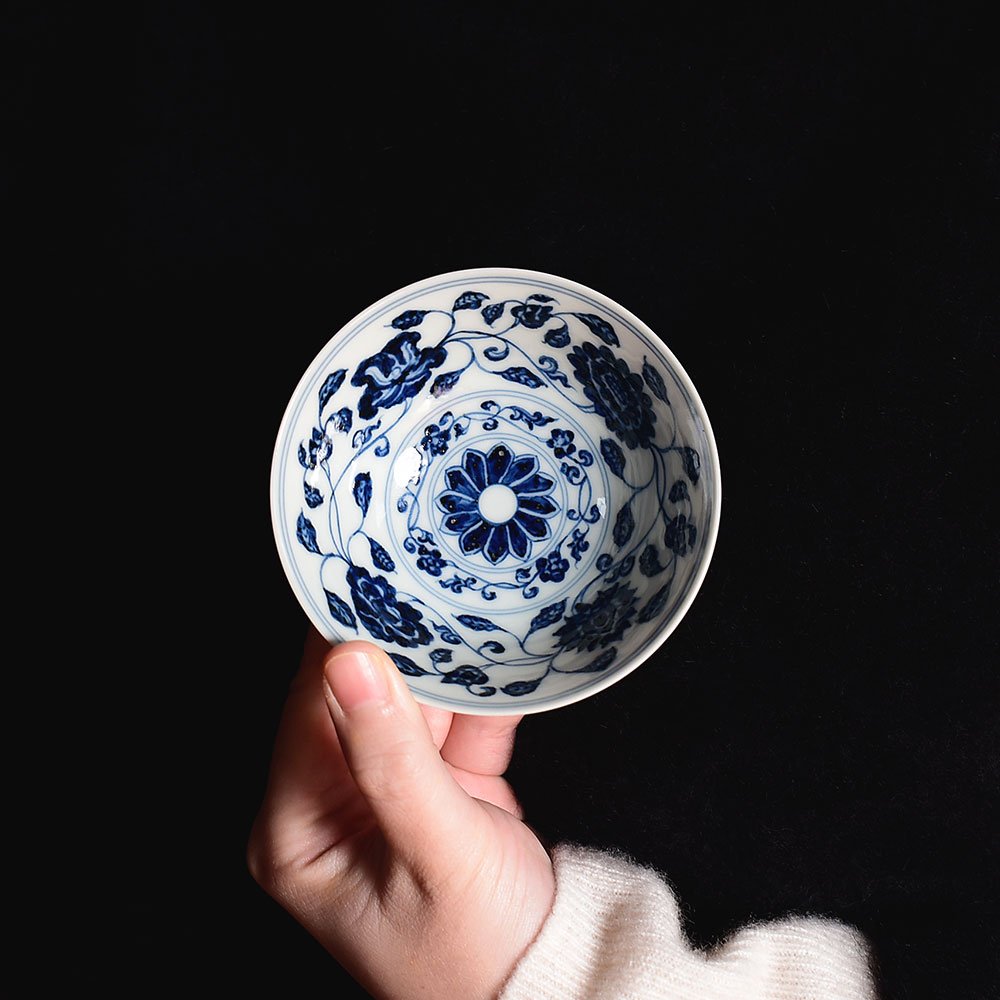
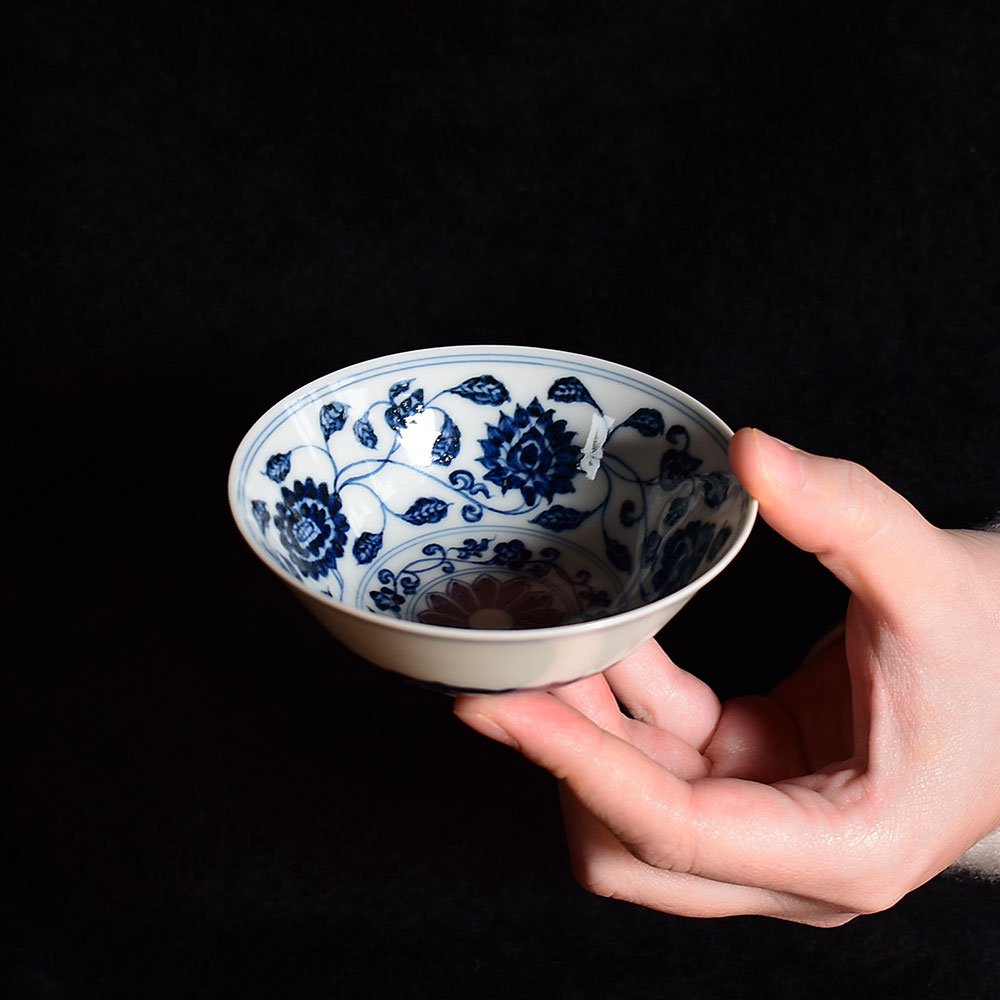
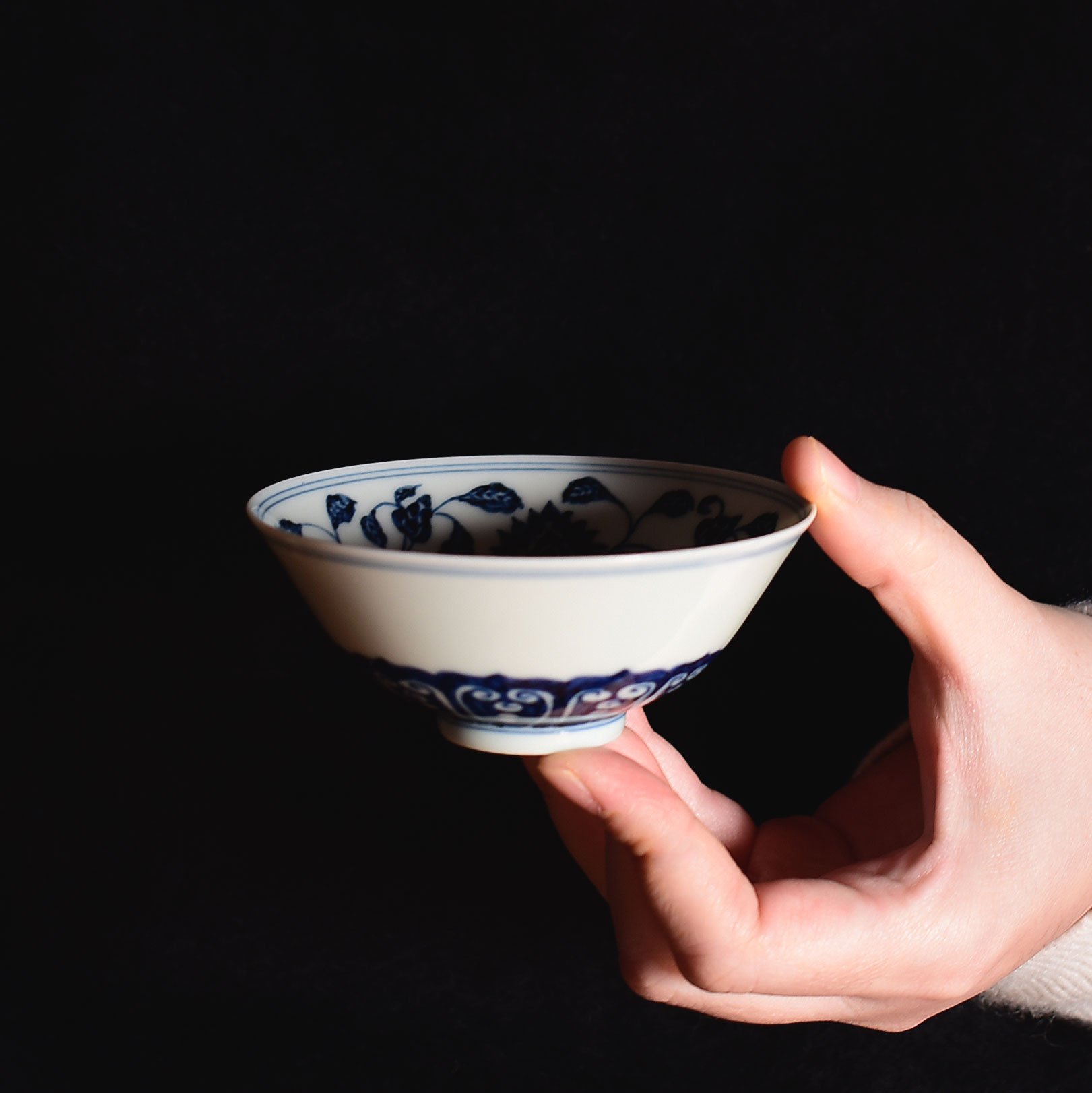
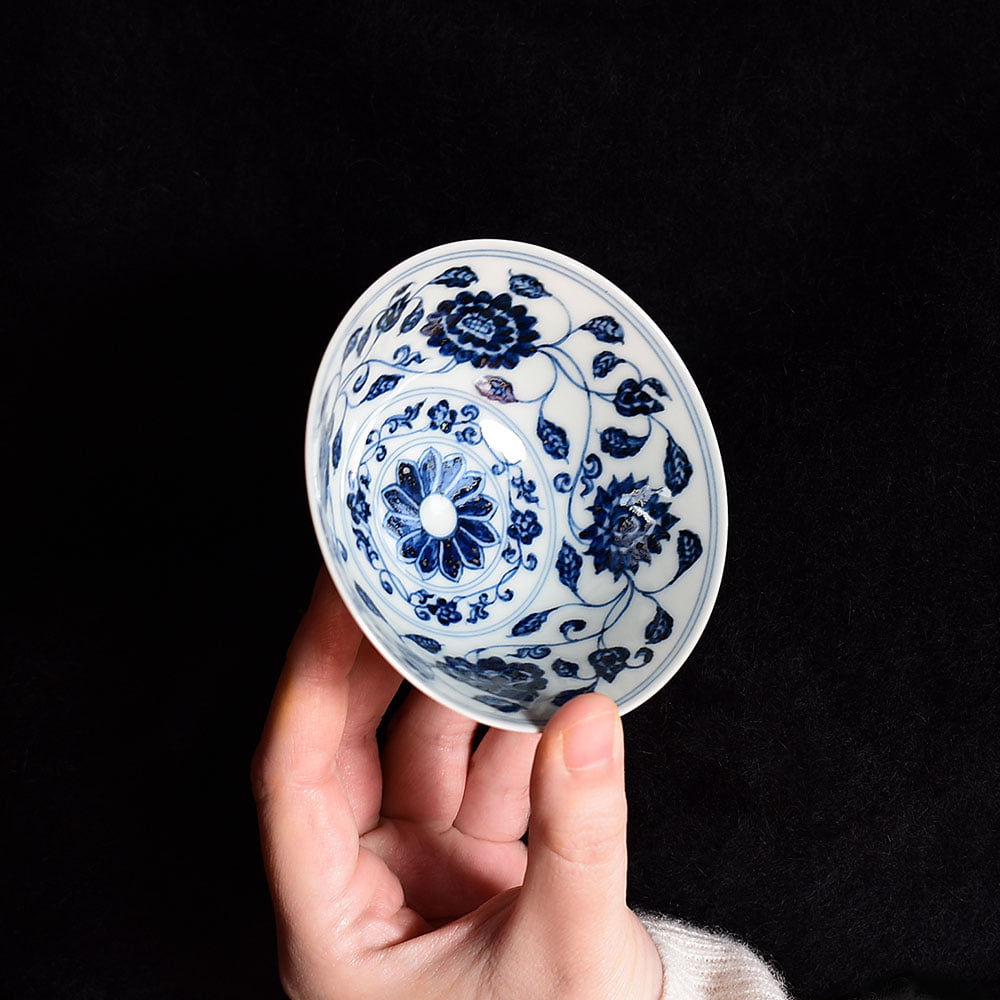
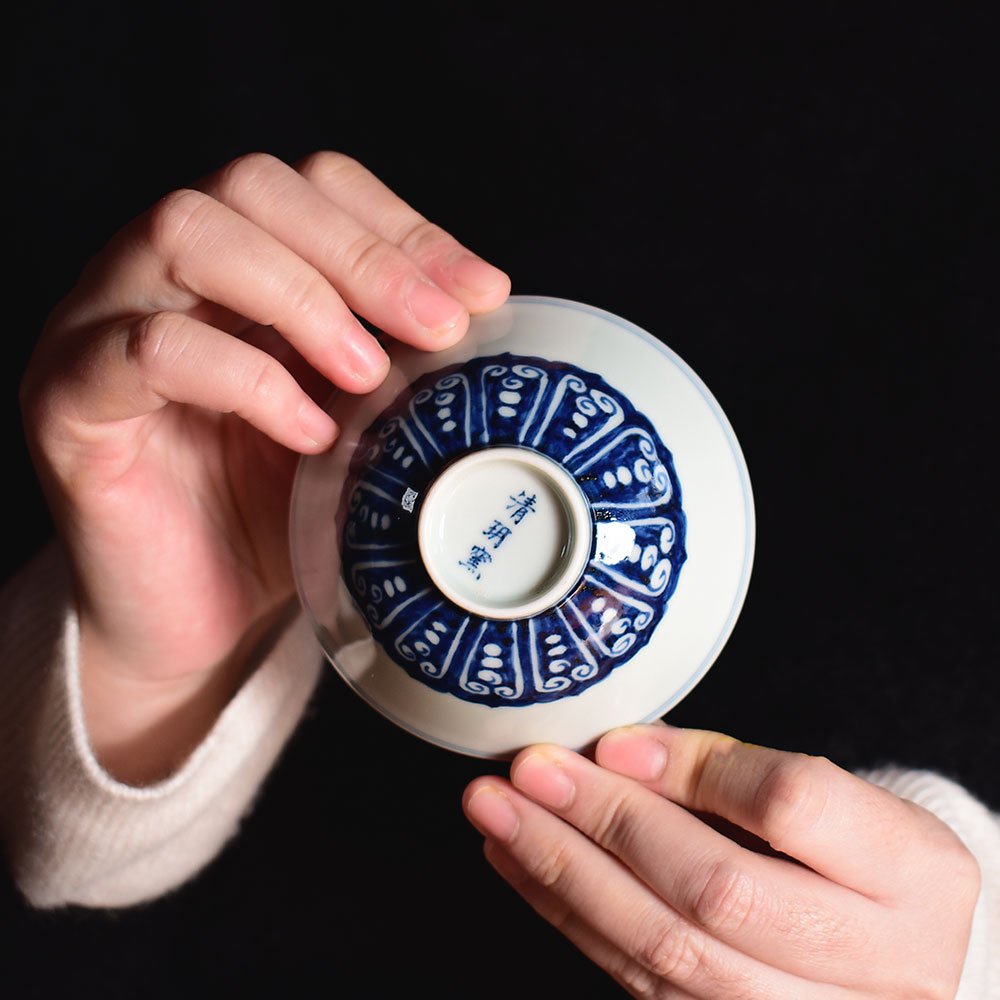
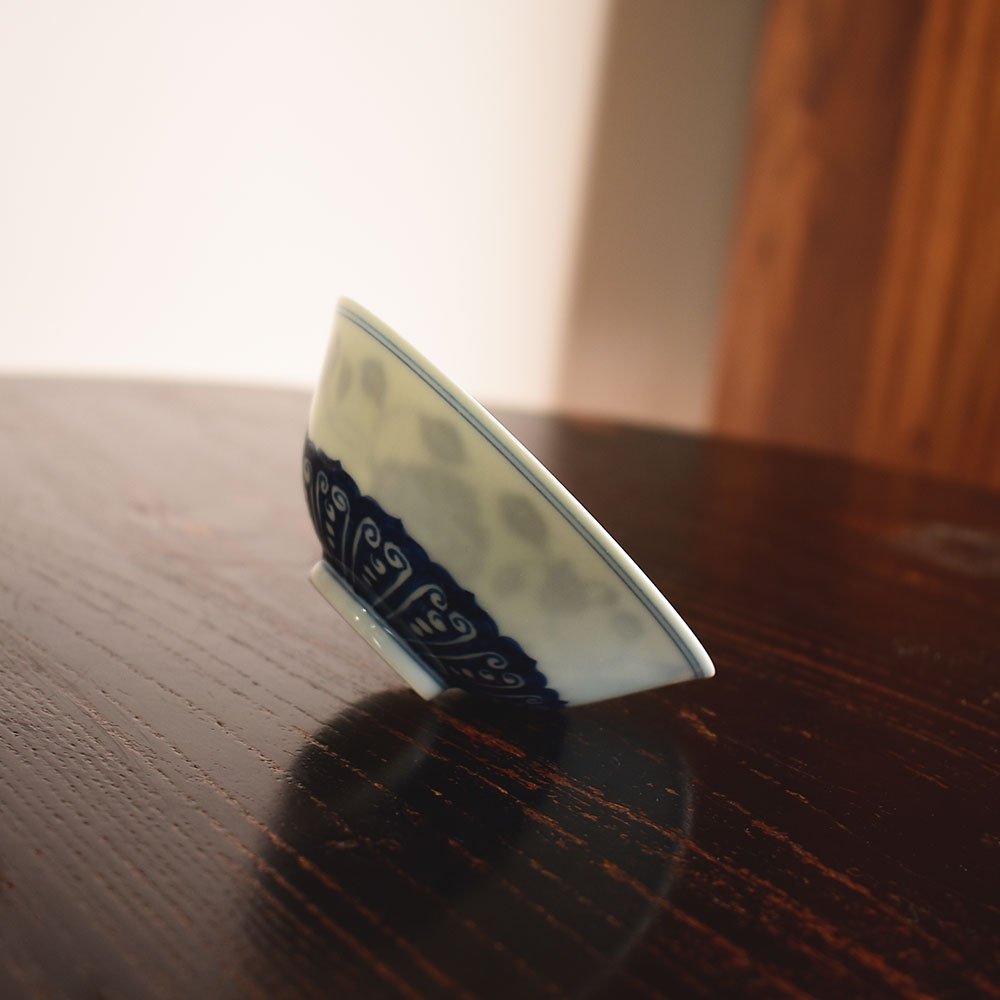
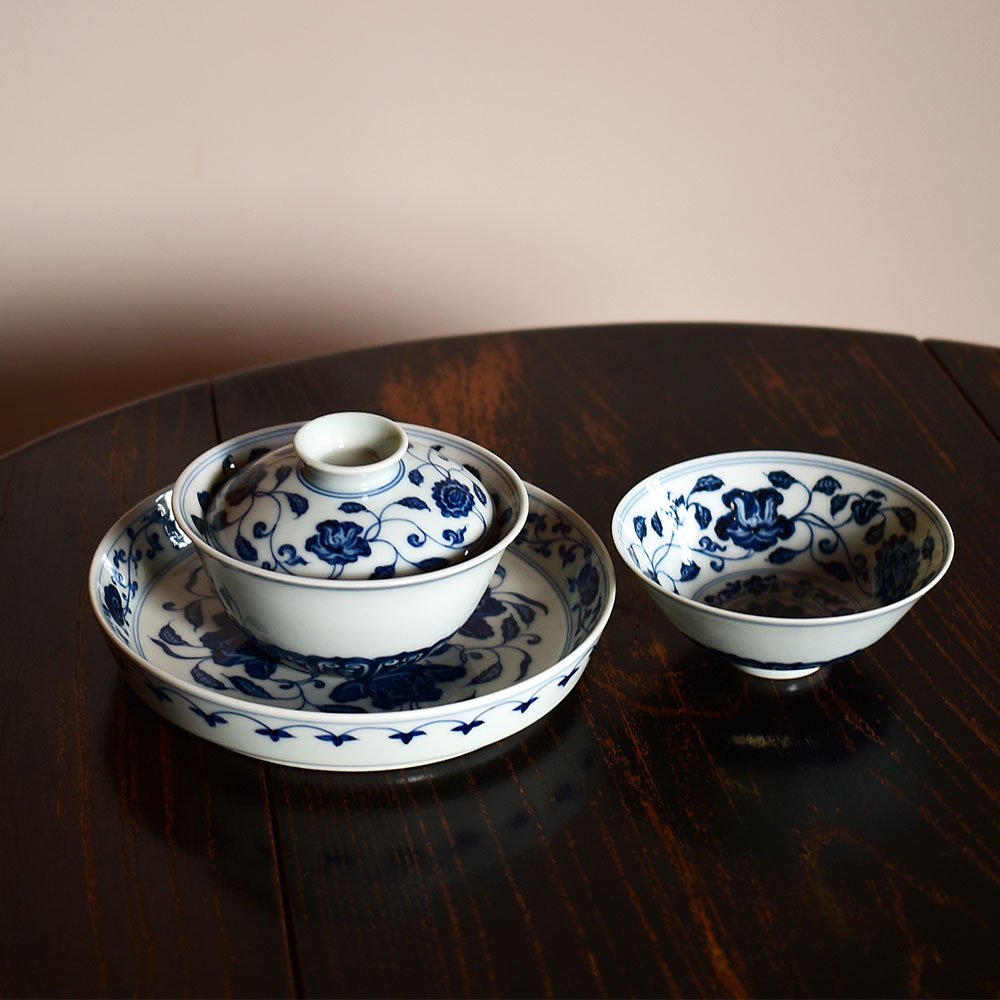
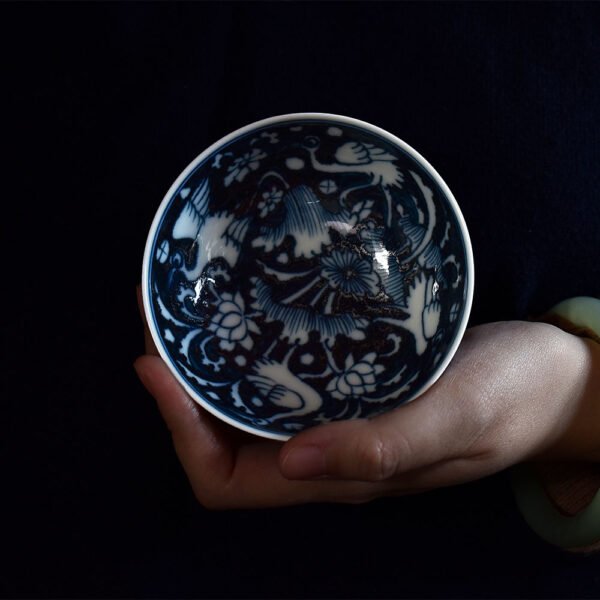
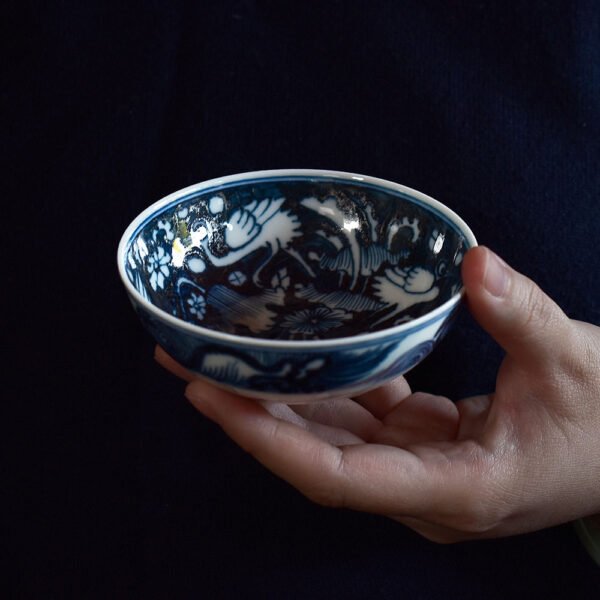
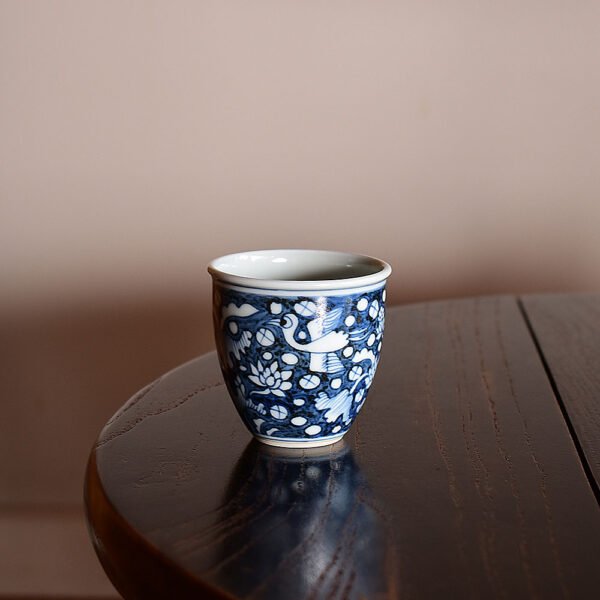
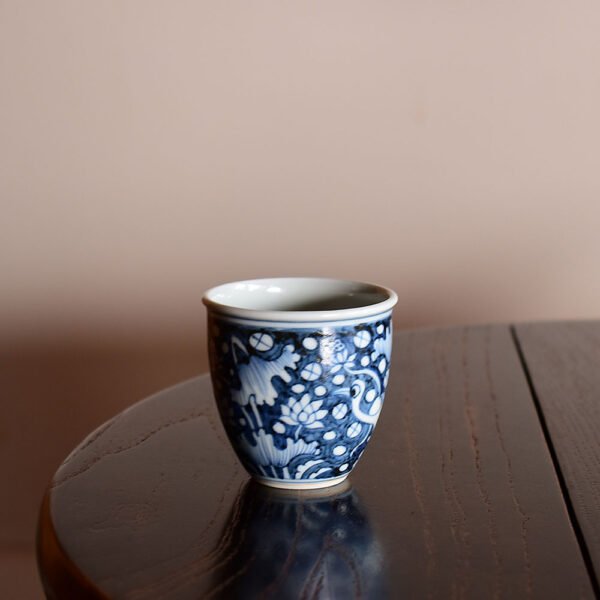
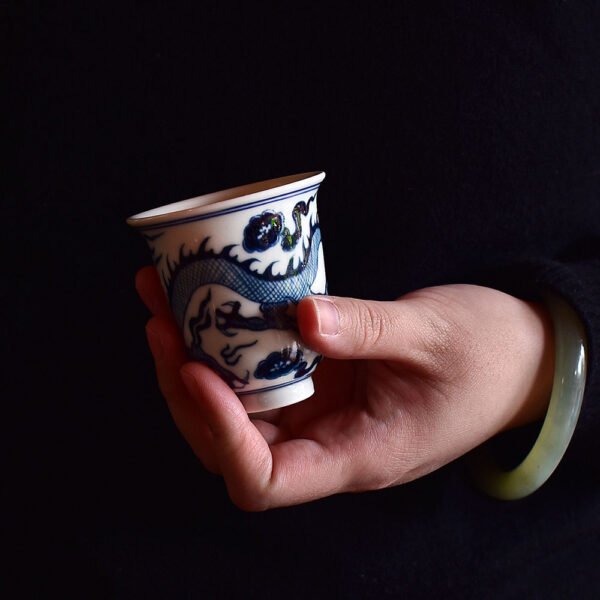
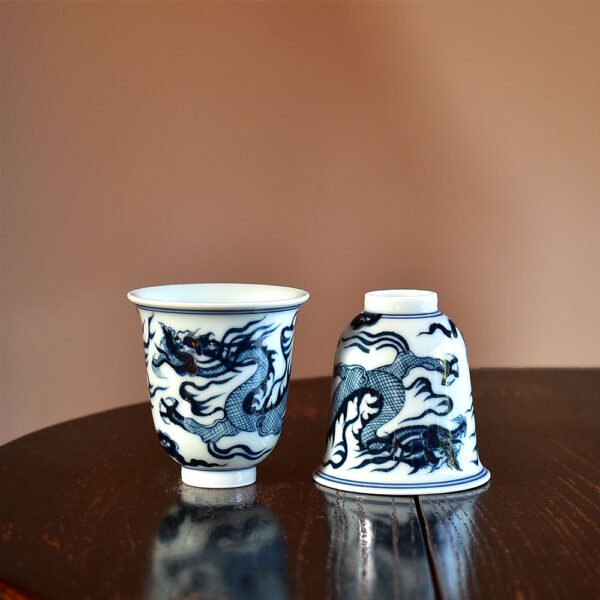
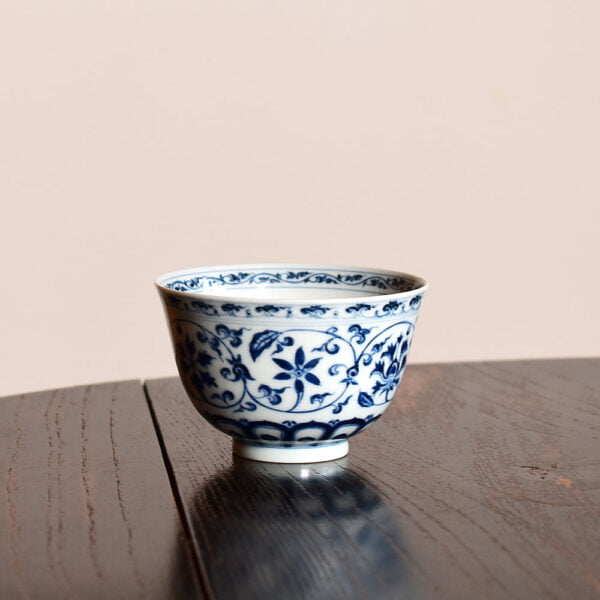
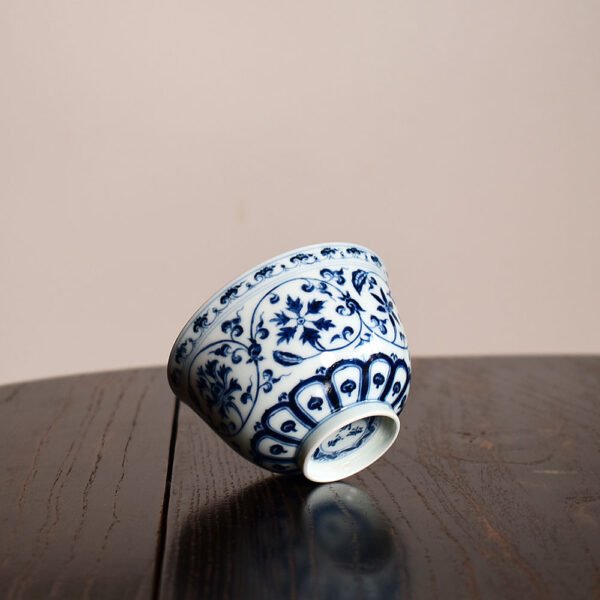
There are no reviews yet.